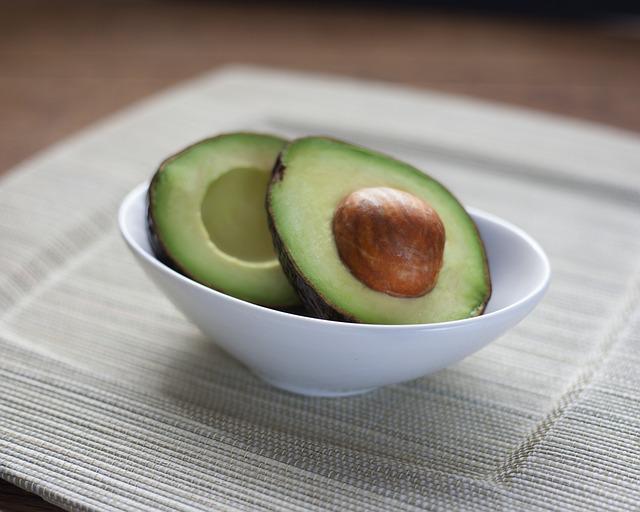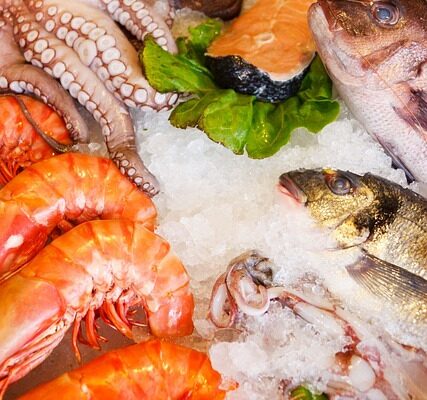The Whole30 diet is a month-long cleanse. Many typical foods in Western diets, such as sugar, alcohol, wheat, dairy, legumes, and some food additives, are thought to be hazardous to your overall health, well-being, and energy levels.
The Whole30 regimen was devised in 2009 by Melissa Hartwig Urban and Dallas Hartwig. A couple of sports nutritionists described it in their New York Times bestseller “It Begins With Food.”
In practice, it is a short-term nutritional reset that claims to eliminate various food groups that may have a negative impact on the body, allowing the body to heal and rebuild itself.
United States News and World Report Best Diets rates the Whole30 plan 35th in Best Diets Overall, with a score of 2/5.1. To determine whether the Whole30 diet is good for you, learn more about it and how it works.
What Are Your Options?
The Whole30 diet emphasizes whole, unprocessed foods such as animal protein, vegetables, fruits, nuts, and healthy fats. Simultaneously, you abstain from grains, legumes, dairy, added sugar, fake sugar, alcohol, and some additives.
The rules are straightforward but stringent:
- Consume modest amounts of meat, seafood, and eggs, as well as plenty of vegetables, fruit, natural fats, herbs, spices, and seasonings.
- Consume meals with few pronounceable components or no ingredients because they are whole and unprocessed.
- For 30 days, refrain from eating the foods to be avoided, even in small amounts.
After 30 days of adhering to the Whole30 eating plan, the forbidden items are gradually reintroduced one at a time to check if anything causes an allergic reaction.
What You Should Know
The Program is based on studies on how various nutrients affect the body. Foods permitted on a diet must meet the diet’s four “Good Food” guidelines.
The food you eat on the Whole30 diet should:
- Encourage a positive psychological response
- Encourage a healthy hormonal response.
- Promote intestinal health
- Enhance immune function and reduce inflammation
Meal time is not restricted under the Whole30 diet. It does, however, advise eating three meals a day and not snacking in between.
While the initial treatment is only 30 days long, reintroduction can take some time. During this time, you gradually reintroduce one food category at a time, eating several portions of a variety of foods from that group over three days while adhering to the rest of the Whole30 regimen.
Food groups can be consumed in any order. However, some people like to start with legumes, then non-gluten grains, dairy, and gluten-containing grains. Be on the lookout for signs such as gastrointestinal difficulties, rashes, bodily pain, or energy declines after reintroduction.
Things You Can Eat
- Meat, poultry, and seafood
- Eggs
- Vegetables
- Natural fats from fruits
- Vinegar with Almonds (except for malt vinegar)
- Coconut amino acids
- Seasonings, herbs, and spices
Things You Should Avoid
- Sugar and artificial sweeteners
- Alcohol
- Grains
- Legumes, such as soy and peanuts
- Dairy additives such as carrageenan, MSG, and sulfites
- Certain seed and vegetable oils
There is no added sugar (Real or Artificial)
For example, no honey, agave nectar, maple syrup, coconut sugar, stevia, Splenda, Equal, NutraSweet, xylitol, and sugar alcohols are to be consumed.
Nonetheless, small amounts of fruit juice used as a sweetener in recipes are permitted, and full fruits are not prohibited.
There will be no alcohol.
Do not consume alcoholic beverages or consume foods prepared with alcohol, even if the alcohol has been cooked out.
No grains allowed.
Wheat, rye, barley, oats, bulgur, sorghum, sprouted grains, quinoa, amaranth, corn, rice, millet and buckwheat are examples.
Most legumes should be avoided.
Beans of various varieties (red, pinto, white, black, navy, kidney, fava, lima, etc.), peas, chickpeas, lentils, peanuts, peanut butter, soy, and soy products are included (including soy sauce, miso, tofu, tempeh, edamame, and soy lecithin).
Dairy items such as cheese, milk cream, yogurt, kefir, yogurt, ice cream, sour cream, or frozen yogurt are not permitted. The sole exceptions are ghee and clarified butter, which has had the milk proteins removed.
Some seed and vegetable oils should be avoided.
Canola (rapeseed), chia, corn, cottonseed, flax (linseed), hemp, palm kernel, safflower, sesame, grapeseed, peanut, rice bran, soybean, and sunflower are examples of these.
There is no carrageenan, MSG, or sulfites in this product.
If these additives appear on food labels in any way, avoid them.
Shopping List Example
For 30 days, the Whole30 diet removes dairy, wheat, legumes, sugar, artificial sweeteners, other additives, and alcohol. The shopping list below provides ideas for getting started with this strategy.
Remember, this is not an exhaustive shopping list, and you may discover that different foods perform better for you.
- Greens with dark leaves (kale, spinach, bok choi, Swiss chard)
- Veggies (brussels sprouts, broccoli, cauliflower, sweet potatoes, bell peppers, eggplant, carrots, cucumbers)
- Fruits (avocado, grapefruit, oranges, berries, bananas, apples) (avocado, grapefruit, oranges, berries, bananas, apples)
- Sources of lean animal protein (chicken breast, lean cuts of beef, pork tenderloin)
- Frozen or fresh fish (halibut, cod, salmon, snapper, sea bass, shrimp)
- Nuts (walnuts, almonds, cashews) (walnuts, almonds, cashews)
- Oils (olive oil, coconut oil) (olive oil, coconut oil)
- Plant milk that is organic and non-dairy (carrageenan-free)
- Seasonings that are legal (amino acids, malt vinegar, turmeric)
- Eggs
Meal Plan Example
The Whole30 diet recommends three meals each day with no snacks in between. The three-day food plan that follows provides advice for sticking to the diet. Please keep in mind that this meal plan is just an example. There are other meals that are more suited to your interests, preferences, and budget.
Day 1
- Breakfast: serve Mexican garden scramble (omit cheese) with 1/4 cup mixed berries
- Lunch: salad with chicken, bacon (sugar-free), and apple; substitute olive oil for Italian dressing)
- Dinner: 3-ounce pistachio-crusted fish served with celery root potato mash (3/4 cup mash)
Day 2
- breakfast: 1 omelet roulade (without feta); 1/2 grapefruit
- Lunch: 3 ounces spring mix salad greens with olive oil and 3/4 cup chicken salad with avocado (substitute cashew or almond yogurt for Greek yogurt).
- Dinner: 1 grilled shrimp serving; 1 1/4 cup roasted potatoes with rosemary; 3/4 cup roasted beet salad (omit feta)
Day 3
- breakfast: 2 scrambled or over-easy eggs, 1/2 avocado, and an 8-ounce fruit smoothie
- lunch: 1 cup cooked zucchini noodles topped with garlic and lemon zest sautéed broccoli
- Dinner: 1 cup rainbow vegetable soup and a 3-ounce dish of grilled chicken breast.
Although the Whole30 Program is not for everyone, those who have completed it commend its success in enhancing energy, mental clarity, and overall wellness. Before attempting this dietary regimen, weigh the benefits and drawbacks.


Pros
Nutrient-Dense
The Whole30 diet is packed with nutritious whole foods like protein, veggies, fruits, and healthy fats. On this healthy-eating diet, most people report feeling better physically, intellectually, and emotionally.
Food Sensitivities Can develop.
It serves as an elimination diet, allowing you to identify items that may cause allergies or sensitivities. This is a clinical, time-honored strategy that can be used to detect trigger foods and reduce symptoms.
Sugar and processed foods are prohibited.
Nutritionists believe that eliminating added sugars and processed foods from our diet, as Whole30 suggests, is beneficial. Lowering added sugar consumption reduces inflammation and sickness and improves general health.
There are no restrictions on compliant foods.
While some foods are prohibited, there are no restrictions on the number of conforming foods you can eat, which means there are no calorie constraints, and you can eat until you are full. The plan also does not require organic fruits and vegetables or grass-fed or cage-free animal protein.
Cons
Very Restrictive
The Whole30 diet eliminates certain foods present in the average American diet as well as most processed and pre-packaged meals.
Meal Preparation Is Necessary
When following the Whole30 diet, you must carefully study product labels, avoid most restaurants and takeaways, plan ahead of time, and prepare the majority of your meals from scratch. It can be time-consuming, and many people find this to be the most difficult component of the strategy.
Socializing is difficult.
The right diet and no-alcohol policy can make it tough to socialize. Eating out and at other people’s houses might be difficult.
Furthermore, the diet eliminates many physically addictive substances, such as sugar and alcohol, and quitting cold turkey may result in physical withdrawal symptoms.
Before beginning the 30-day diet, it is recommended that you gradually wean yourself off sugar and alcohol.
Rigid and regimented
For the next 30 days, no deviations are permitted. According to the diet’s co-founders, only one mouthful of an off-limit meal can break the cycle. So if you got off track you need to reset the clock back to day one. Some people may find this technique repulsive and insulting rather than motivating.
Click Here to Read Part 2


